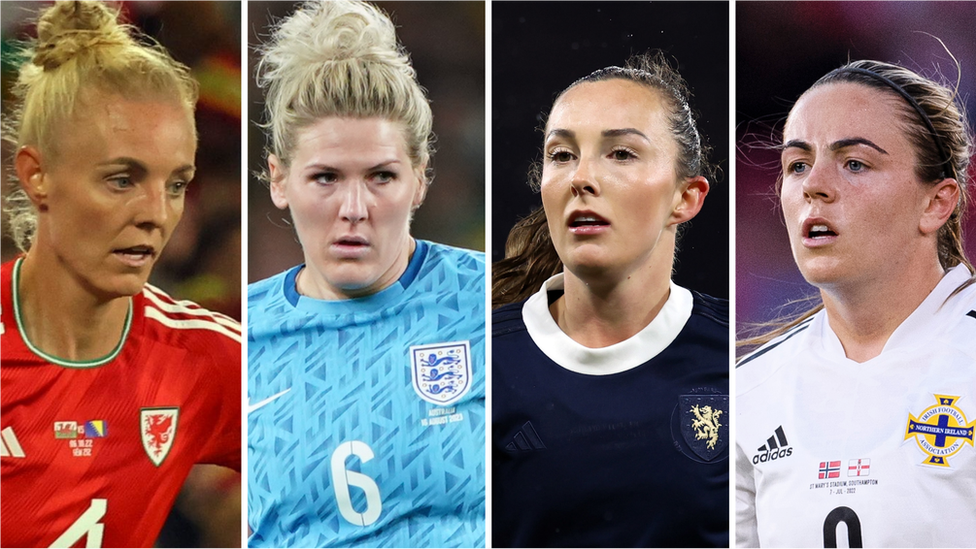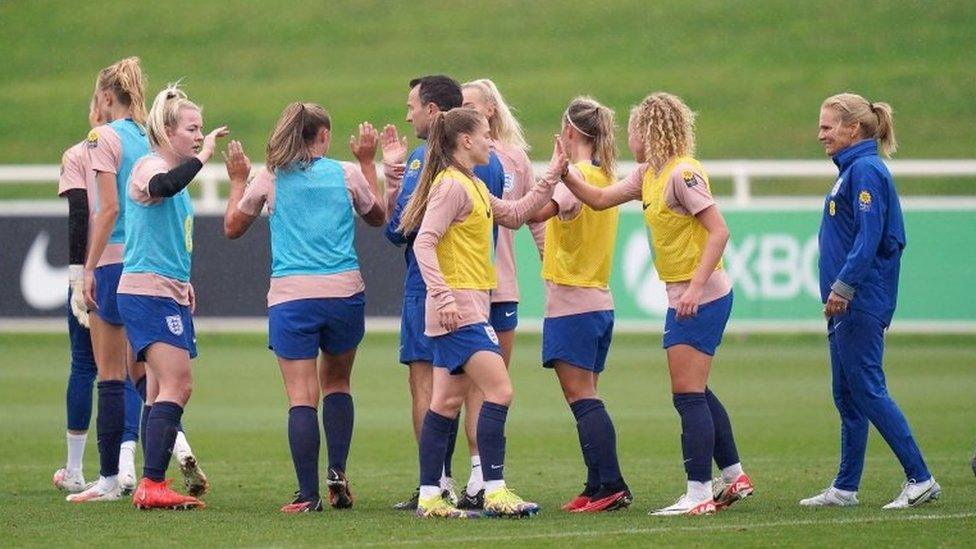UEFA Women's Nations League 2023: What is it? Who are the home nations playing?
- Published
- comments

A brand new Uefa competition for women's international football is about to kick-off.
While the men's version has been running for the past few years, this is the first season in which the Women's Nations League will take place.
There is plenty to play for, with a couple of extra prizes up for grabs too - including qualification for next year's Olympics in Paris as well as Euro 2025.
All the home nations are involved but how does the new competition work?
Here's everything you need to know!
What is the Women's Nations League?

The men's Nations League was introduced in 2018 to replace international friendlies with more competitive games, and the new women's three-league tournament follows a similar format to the men's event.
Teams have been placed into three separate leagues - A, B and C - by Uefa on based on their country rankings.
Teams will play each other in their groups twice over the next few months, both at home and away, before relegations and promotions are decided across the leagues, as well as qualification for the Women's Nations League finals.
League A
England, Scotland and Wales are all in League A, which has four groups made up of teams ranked one to 16.
Group A1: England, Netherlands, Belgium, Scotland
Group A2: France, Norway, Austria, Portugal
Group A3: Germany, Denmark, Iceland, Wales
Group A4: Sweden, Spain, Italy, Switzerland
In League A, the team that finishes top of each of the four groups will go into the knockout rounds of the competition consisting of semi-finals, a third-placed play-off as well as the final - to be played in February 2024 - to determine the winner of the Nations League.
In addition to that, the two teams that make to the final will qualify for next year's women's football tournament at the Paris Olympics.
The Nations League will also affect qualification for Euro 2025, which will be held in Switzerland.
The top eight finishers in League A will qualify directly for the European Championships.
The team that finishes bottom of each group will be relegated to League B.
League B
League B features teams ranked between 17 and 32 and includes Northern Ireland and the Republic of Ireland - who are both in the same group.
Group B1: Republic of Ireland, Northern Ireland, Hungary, Albania
Group B2: Finland, Romania, Slovakia, Croatia
Group B3: Poland, Serbia, Ukraine, Greece
Group B4: Czechia, Slovenia, Bosnia and Herzegovina, Belarus
The four group winners will be automatically promoted to League A, although teams that finish second will also get the chance to be promoted.
The lowest ranked third-placed team as well as the four teams that finish bottom of each group will be relegated to League C.
League C
League C has five groups, made up of teams ranked 32 and below.
Group C1: Malta, Moldova, Latvia, Andorra
Group C2: Türkiye, Luxembourg, Lithuania, Georgia
Group C3: Azerbaijan, Montenegro, Cyprus, Faroe Islands
Group C4: Israel, Estonia, Kazakhstan, Armenia
Group C5: North Macedonia, Kosovo, Bulgaria
The four group winners will be automatically promoted to League B, although teams that finish second will also get the chance to be promoted.
The remaining teams will stay in League C.
Who are the home nations playing first?

England return to action this week for the first time since losing the Women's World Cup final when they face Scotland on Friday at the Stadium of Light in Sunderland.
Wales also start their campaign on Friday as they travel to Iceland for their opening game and Northern Ireland visit Dublin to take on the Republic of Ireland on Saturday.
